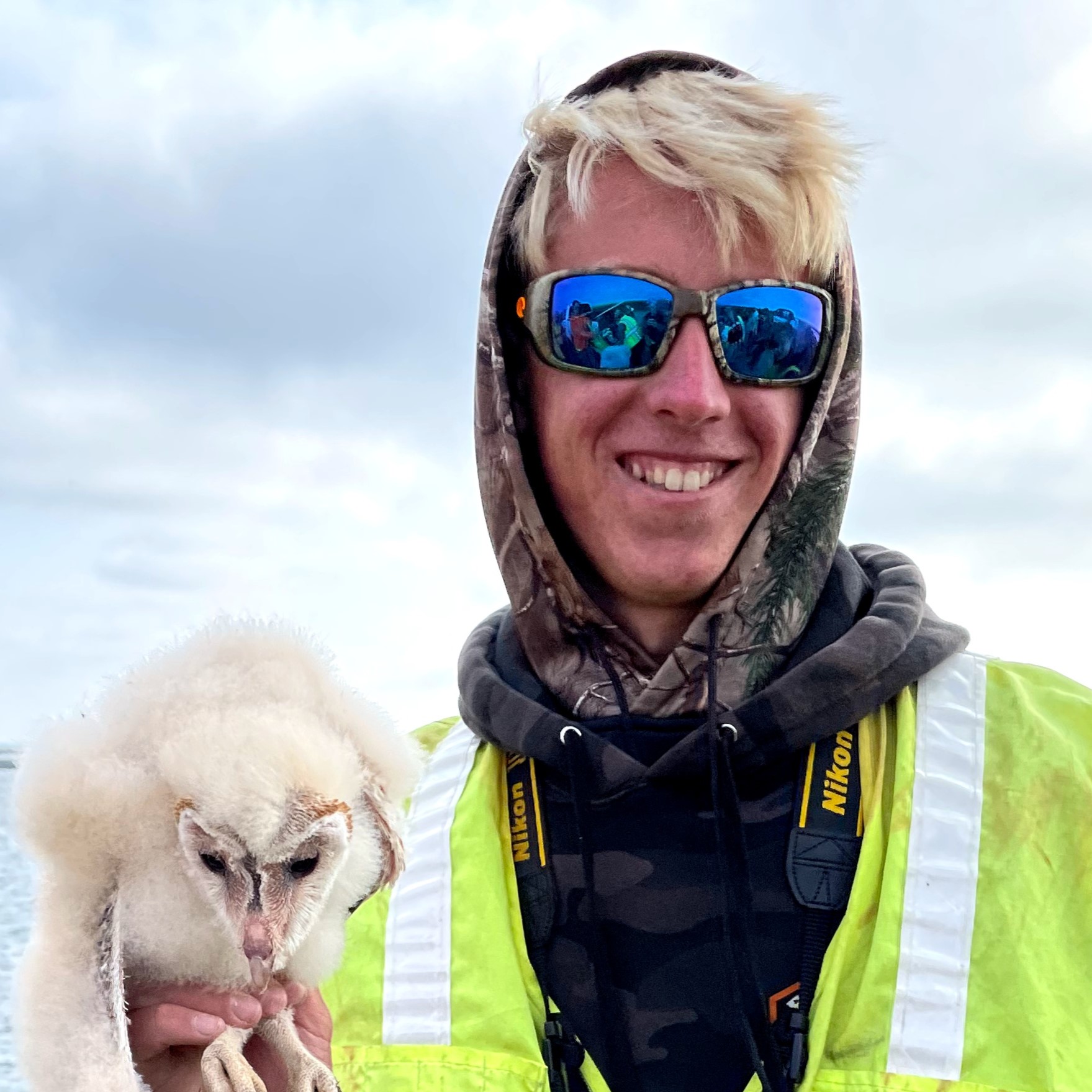
Jonathan Irons, from Queenstown, is a lifelong birder and has partnered with BBA3 and MDNR to atlas in low-effort blocks, especially at night, on the Eastern Shore.
What made you interested in birds?
I was always interested in the natural world and enjoyed being outdoors, but my interest in birds sparked when I joined the Youth Maryland Ornithological Society (YMOS) in 2012. This organization bonded like-minded youth through monthly field trips across the mid-Atlantic and refined my knowledge and love for birds and their habitats.
Where is your favorite place to atlas?
I spend all of my effort on the Eastern Shore. There are a few areas that are particularly productive and enjoyable to atlas, including the Pocomoke Drainage on the lower shore and the vast fields and woodlots along the eastern edge of Kent, Queen Anne’s, and Caroline counties. Both areas hold unique nesting species and have endless backroads to atlas. If I had to pick between the two, the species diversity of the Pocomoke Drainage is unparalleled on the Shore and its abundance of breeding warblers, vireos, and nightjars makes it my favorite. Everywhere across Maryland and DC has its honey holes that are packed with nesting birds, it just takes a little effort to find them.
Have you been involved with any atlases prior to this one?
No, this is the first atlas I have been involved with.
What is the best thing about atlasing?
Atlasing makes you slow down and pay attention to the small details in a bird’s behavior, necessary for determining breeding codes. This helps you understand the characteristics and personality of each species which in turn, makes you a better birder. Atlasing also takes you to areas that you wouldn’t normally bird, refining your understanding of the distribution of your local breeders.
What’s our biggest conservation issue?
At least on Delmarva, I think the balance between agricultural lands, development, and preserved areas is vital and lacking. Programs like the Conservation Reserve Program, better known as CRP, are important in maintaining a healthy balance in land use. Also, the Natural Lands Project at Washington College is doing great work by implementing buffers and converting pockets of unproductive cropland into habitat for birds and much more. Collaboration of different agencies and organizations, with landowners and farmers can make a significant impact.
You can take binoculars, a field guide, and what other item?
I would bring my phone. It makes the technical side of atlasing so much easier. I cannot imagine logging breeding codes, identifying block lines, navigating unfamiliar back roads, or finding good habitat without one.
Who would you go atlasing with?
Birding with friends is the best and atlasing with anyone interested in birds and the atlas project is equally enjoyable.
What bird do you particularly like?
Common Terns are my favorite bird in Maryland and perhaps anywhere. I had the opportunity to monitor their colonies on Poplar Island this summer where we recorded egg and clutch info, banded chicks, and tracked them from banding to fledging and beyond. Their personality, sounds, and charisma are the best!
What bird best reflects your personality?
Cuckoos match my personality well, they keep to themselves and like being alone, and are rather mysterious.


